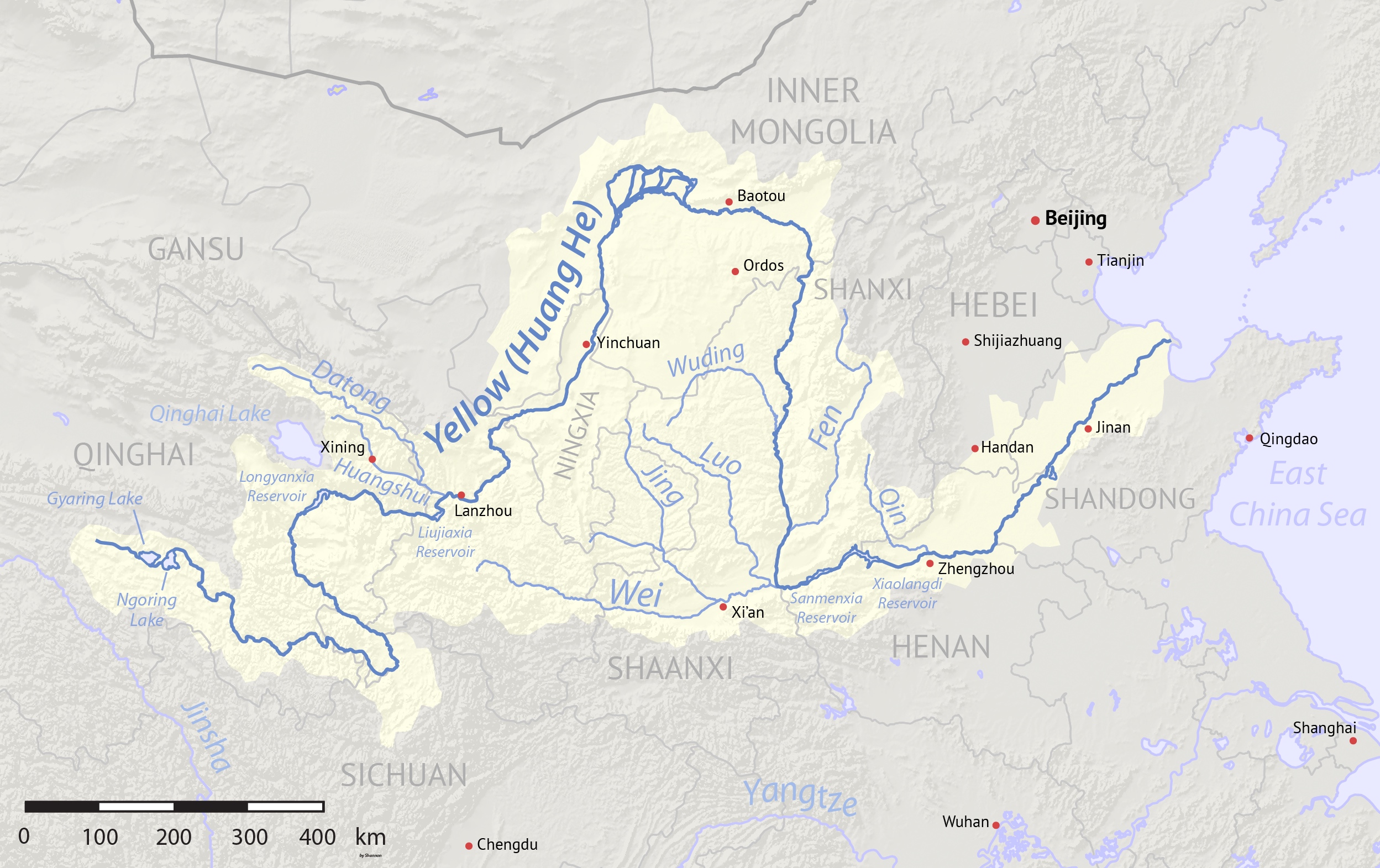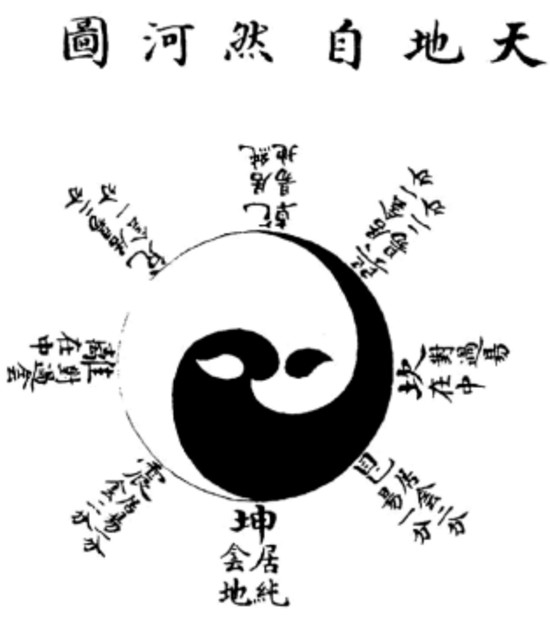|
Luoshu
The Luoshu (pinyin), Lo Shu ( Wade-Giles), or Nine Halls Diagram is an ancient Chinese diagram and named for the Luo River near Luoyang, Henan. The Luoshu appears in myths concerning the invention of writing by Cangjie and other culture heroes. It is a unique normal magic square of order three. It is usually paired with the River Map or Hetunamed in reference to the Yellow Riverand used with the River Map in various contexts involving Chinese geomancy, numerology, philosophy, and early natural science. Traditions The Lo Shu is part of the legacy of ancient Chinese mathematical and divinity (cf. the I Ching ) traditions, and is an important emblem in '' Feng Shui'' ()—the art of geomancy concerned with the placement of objects in relation to the flow of qi (), or "natural energy". History A Chinese legend concerning the pre-historic Emperor Yu () tells of the Lo Shu, often in connection with the ''Yellow River Map'' (Hetu) and the eight trigrams. In ancient China there i ... [...More Info...] [...Related Items...] OR: [Wikipedia] [Google] [Baidu] |
Yellow River Map
The Yellow River Map, Scheme, or Diagram, also known by its Chinese name as the Hetu, is an ancient Chinese diagram that appears in myths concerning the invention of writing by Cangjie and other culture heroes. It is usually paired with the Luoshu Squarenamed in reference to the Yellow River's Luo tributaryand used with the Luoshu in various contexts involving Chinese geomancy, numerology, philosophy, and early natural science. Geographical background The Yellow River (Chinese: ''Huang He'') flows from the Tibetan Plateau to the Bay of Bohai over a course of , making it the second-longest river in Asia and the sixth-longest in the world. Its ancient name was simply ''He'' before that character was broadened to be used in reference to most moderately sized rivers. The River Map has thus always been understood to be particularly in reference to the Yellow River and sometimes taken as a diagram of its course or the forces acting upon it. Astrological background T ... [...More Info...] [...Related Items...] OR: [Wikipedia] [Google] [Baidu] |
Magic Square
In recreational mathematics, a square array of numbers, usually positive integers, is called a magic square if the sums of the numbers in each row, each column, and both main diagonals are the same. The 'order' of the magic square is the number of integers along one side (''n''), and the constant sum is called the ' magic constant'. If the array includes just the positive integers 1,2,...,n^2, the magic square is said to be 'normal'. Some authors take magic square to mean normal magic square. Magic squares that include repeated entries do not fall under this definition and are referred to as 'trivial'. Some well-known examples, including the Sagrada Família magic square and the Parker square are trivial in this sense. When all the rows and columns but not both diagonals sum to the magic constant this gives a ''semimagic square (sometimes called orthomagic square). The mathematical study of magic squares typically deals with their construction, classification, and enumeration. ... [...More Info...] [...Related Items...] OR: [Wikipedia] [Google] [Baidu] |
Natural Science
Natural science is one of the branches of science concerned with the description, understanding and prediction of natural phenomena, based on empirical evidence from observation and experimentation. Mechanisms such as peer review and repeatability of findings are used to try to ensure the validity of scientific advances. Natural science can be divided into two main branches: life science and physical science. Life science is alternatively known as biology, and physical science is subdivided into branches: physics, chemistry, earth science, and astronomy. These branches of natural science may be further divided into more specialized branches (also known as fields). As empirical sciences, natural sciences use tools from the formal sciences, such as mathematics and logic, converting information about nature into measurements which can be explained as clear statements of the " laws of nature". Modern natural science succeeded more classical approaches to natural philosophy, usua ... [...More Info...] [...Related Items...] OR: [Wikipedia] [Google] [Baidu] |
Associative Magic Square
In mathematics, the associative property is a property of some binary operations, which means that rearranging the parentheses in an expression will not change the result. In propositional logic, associativity is a valid rule of replacement for expressions in logical proofs. Within an expression containing two or more occurrences in a row of the same associative operator, the order in which the operations are performed does not matter as long as the sequence of the operands is not changed. That is (after rewriting the expression with parentheses and in infix notation if necessary), rearranging the parentheses in such an expression will not change its value. Consider the following equations: \begin (2 + 3) + 4 &= 2 + (3 + 4) = 9 \,\\ 2 \times (3 \times 4) &= (2 \times 3) \times 4 = 24 . \end Even though the parentheses were rearranged on each line, the values of the expressions were not altered. Since this holds true when performing addition and multiplication on any real ... [...More Info...] [...Related Items...] OR: [Wikipedia] [Google] [Baidu] |
Mandala
A mandala ( sa, मण्डल, maṇḍala, circle, ) is a geometric configuration of symbols. In various spiritual traditions, mandalas may be employed for focusing attention of practitioners and adepts, as a spiritual guidance tool, for establishing a sacred space and as an aid to meditation and trance induction. In the Eastern religions of Hinduism, Buddhism, Jainism and Shinto it is used as a map representing deities, or especially in the case of Shinto, paradises, kami or actual shrines. A mandala generally represents the spiritual journey, starting from outside to the inner core, through layers. Hinduism In Hinduism, a basic mandala, also called a ''yantra'', takes the form of a square with four gates containing a circle with a center point. Each gate is in the general shape of a T. Mandalas often have radial balance. A ''yantra'' is similar to a mandala, usually smaller and using a more limited colour palette. It may be a two- or three-dimensional geometric compo ... [...More Info...] [...Related Items...] OR: [Wikipedia] [Google] [Baidu] |
Trigrams
Trigrams are a special case of the ''n''-gram, where ''n'' is 3. They are often used in natural language processing for performing statistical analysis of texts and in cryptography for control and use of ciphers and codes. Frequency Context is very important, varying analysis rankings and percentages are easily derived by drawing from different sample sizes, different authors; or different document types: poetry, science-fiction, technology documentation; and writing levels: stories for children versus adults, military orders, and recipes. Typical cryptanalytic frequency analysis finds that the 16 most common character-level trigrams in English are: Because encrypted messages sent by telegraph Telegraphy is the long-distance transmission of messages where the sender uses symbolic codes, known to the recipient, rather than a physical exchange of an object bearing the message. Thus flag semaphore is a method of telegraphy, whereas p ... often omit punctuation and s ... [...More Info...] [...Related Items...] OR: [Wikipedia] [Google] [Baidu] |
Bagua
The bagua or pakua (八卦) are a set of eight symbols that originated in China, used in Taoist cosmology to represent the fundamental principles of reality, seen as a range of eight interrelated concepts. Each consists of three lines, each line either "broken" or "unbroken", respectively representing yin or yang. Due to their tripartite structure, they are often referred to as Eight Trigrams in English. The trigrams are related to Taiji philosophy, Taijiquan and the Wuxing, or "five elements". The relationships between the trigrams are represented in two arrangements: the ''Primordial'' (), "Earlier Heaven", or "Fu Xi" bagua () and the ''Manifested'' (), "Later Heaven", or "King Wen" bagua. The trigrams have correspondences in astronomy, astrology, geography, geomancy, anatomy, the family, martial arts, Chinese medicine and elsewhere. The ancient Chinese classic, I Ching (Pinyin: Yi Jing), consists of the 64 pairwise permutations of trigrams, referred to as "hexagrams", ... [...More Info...] [...Related Items...] OR: [Wikipedia] [Google] [Baidu] |
Chinese Calendar
The traditional Chinese calendar (also known as the Agricultural Calendar ��曆; 农历; ''Nónglì''; 'farming calendar' Former Calendar ��曆; 旧历; ''Jiùlì'' Traditional Calendar ��曆; 老历; ''Lǎolì'', is a lunisolar calendar which identifies years, months, and days according to astronomical phenomena. In China, it is defined by the Chinese national standard GB/T 33661–2017, "Calculation and Promulgation of the Chinese Calendar", issued by the Standardization Administration of China on May 12, 2017. Although modern-day China uses the Gregorian calendar, the traditional Chinese calendar governs holidays, such as the Chinese New Year and Lantern Festival, in both China and overseas Chinese communities. It also provides the traditional Chinese nomenclature of dates within a year which people use to select auspicious days for weddings, funerals, moving or starting a business. The evening state-run news program '' Xinwen Lianbo'' in the P.R.C. continues to a ... [...More Info...] [...Related Items...] OR: [Wikipedia] [Google] [Baidu] |
Turtle
Turtles are an order of reptiles known as Testudines, characterized by a special shell developed mainly from their ribs. Modern turtles are divided into two major groups, the Pleurodira (side necked turtles) and Cryptodira (hidden necked turtles), which differ in the way the head retracts. There are 360 living and recently extinct species of turtles, including land-dwelling tortoises and freshwater terrapins. They are found on most continents, some islands and, in the case of sea turtles, much of the ocean. Like other amniotes (reptiles, birds, and mammals) they breathe air and do not lay eggs underwater, although many species live in or around water. Turtle shells are made mostly of bone; the upper part is the domed carapace, while the underside is the flatter plastron or belly-plate. Its outer surface is covered in scales made of keratin, the material of hair, horns, and claws. The carapace bones develop from ribs that grow sideways and develop into broad flat plates ... [...More Info...] [...Related Items...] OR: [Wikipedia] [Google] [Baidu] |
Flood Myth
A flood myth or a deluge myth is a myth in which a great flood, usually sent by a deity or deities, destroys civilization, often in an act of divine retribution. Parallels are often drawn between the flood waters of these myths and the primaeval waters which appear in certain creation myths, as the flood waters are described as a measure for the cleansing of humanity, in preparation for rebirth. Most flood myths also contain a culture hero, who "represents the human craving for life". The flood-myth motif occurs in many cultures, including the Mesopotamian flood stories, Native American in North America, the Genesis flood narrative, ''manvantara-sandhya'' in Hinduism, and Deucalion and Pyrrha in Greek mythology. Mythologies One example of a flood myth is the '' Epic of Gilgamesh''. Many scholars believe that this account was copied from the Akkadian '' Atra-Hasis'', which dates to the 18th century BCE. In the Gilgamesh flood myth, the highest god, Enlil, ... [...More Info...] [...Related Items...] OR: [Wikipedia] [Google] [Baidu] |
Bagua (concept)
The bagua or pakua (八卦) are a set of eight symbols that originated in China, used in Taoist cosmology to represent the fundamental principles of reality, seen as a range of eight interrelated concepts. Each consists of three lines, each line either "broken" or "unbroken", respectively representing yin or yang. Due to their tripartite structure, they are often referred to as Eight Trigrams in English. The trigrams are related to Taiji philosophy, Taijiquan and the Wuxing, or "five elements". The relationships between the trigrams are represented in two arrangements: the ''Primordial'' (), "Earlier Heaven", or "Fu Xi" bagua () and the ''Manifested'' (), "Later Heaven", or "King Wen" bagua. The trigrams have correspondences in astronomy, astrology, geography, geomancy, anatomy, the family, martial arts, Chinese medicine and elsewhere. The ancient Chinese classic, I Ching (Pinyin: Yi Jing), consists of the 64 pairwise permutations of trigrams, referred to as "hexagrams", ... [...More Info...] [...Related Items...] OR: [Wikipedia] [Google] [Baidu] |







